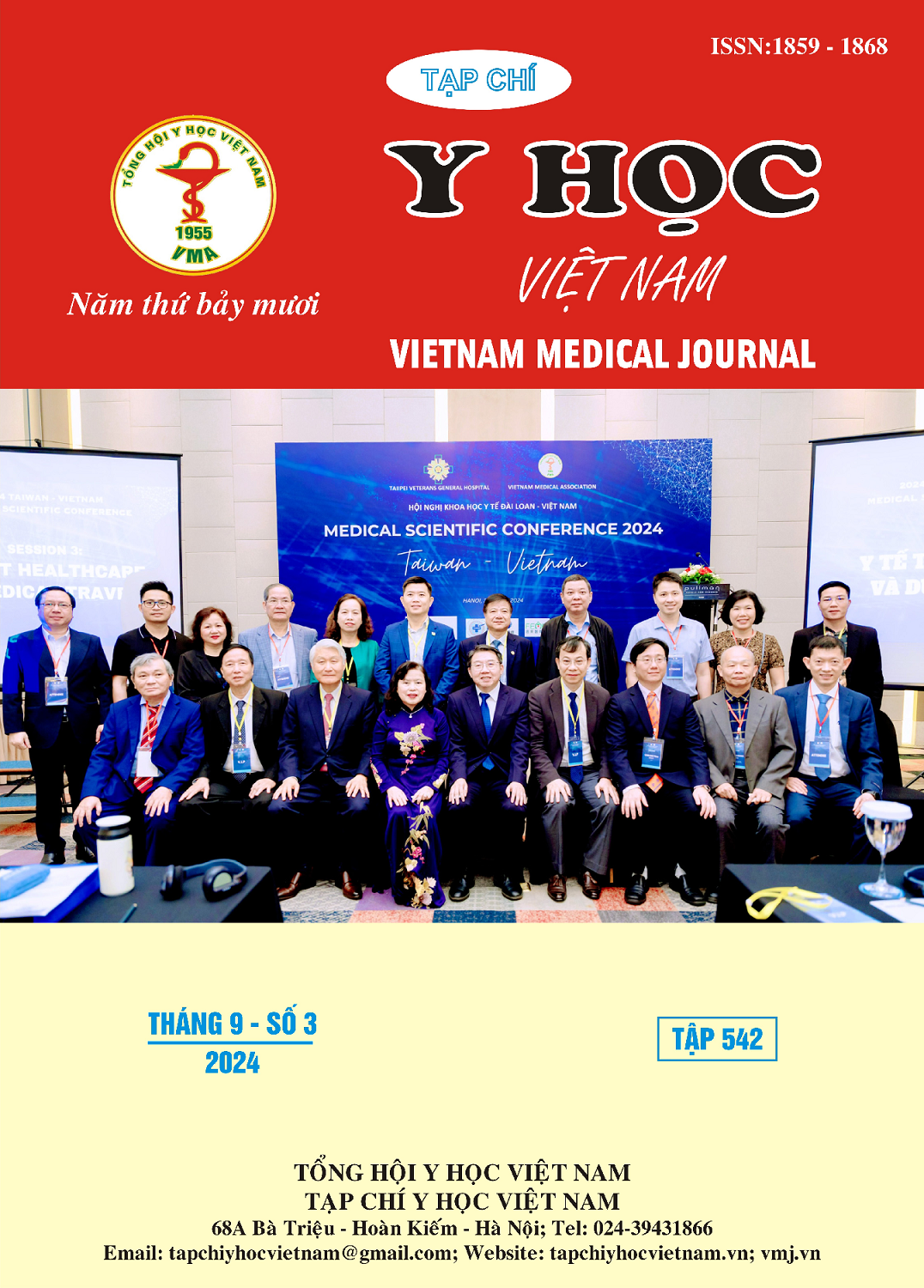EVALUATION OF THE CLINICAL FEATURES OF GINGIVAL PIGMENTATION AT CAN THO UNIVERSITY OF MEDICINE AND PHARMACY HOSPITAL
Main Article Content
Abstract
Background: Gum color is an important aesthetic concern, especially for individuals with a gummy smile. Understanding the characteristics, distribution, and factors affecting gingival pigmentation is crucial in developing effective treatment strategies. Objectives: The study aims to evaluate the clinical features of gingival pigmentation at Can Tho University of Medicine and Pharmacy Hospital. Materials and methods: A cross-sectional descriptive study was conducted on 51 subjects with gingival pigmentation who visited the Dental Department at Can Tho University of Medicine and Pharmacy Hospital from March 2023 to May 2024. Results: A total of 51 participants were included in the study, with those over 30 years old accounting for 54.9%, and the male-to-female ratio was 1.3:1. The prevalence of gingival pigmentation in the maxilla was 52.9%, with 58.8% of participants falling into the moderate to severe category according to the OPI index. Regarding gingival morphology at four jaw positions based on Hedin’s classification, type 1 gingival morphology was predominant at all four positions, while types 2, 3, and 4 were less common across all positions. In the assessment of gingival pigmentation characteristics according to Ponnaiyan’s classification, the highest rate of hyperpigmentation was observed in the attached gingiva at all positions, particularly in the lower jaw quadrants (each accounting for 37.3%). Conclusion: The prevalence of gingival pigmentation was similar in both jaws, with the majority (58.8%) falling into the moderate to severe category according to the OPI index. Gingival pigmentation morphology, characterized by one or two isolated pigment units based on Hedin’s classification, had the highest prevalence at all four jaw positions. According to Ponnaiyan’s classification of gingival pigmentation, the highest rate was observed in cases with pigmentation confined to the attached gingiva, particularly in the lower jaw quadrants
Article Details
Keywords
Gingival pigmentation, clinical features.
References
2. Dummett CO. Barens G. Oromucosal pigmentation: an updated literary review. J Periodontol. 1971;42(11):726-736. doi:10.1902/ jop.1971.42.11.726.
3. Hanioka T, Tanaka K, Ojima M, Yuuki K. Association of melanin pigmentation in the gingiva of children with parents who smoke. Pediatrics. 2005; 116(2):e186-e190. doi:10.1542/peds.2004-2628.
4. Hedin CA. Smokers' melanosis. Occurrence and localization in the attached gingiva. Arch Dermatol. 1977;113(11):1533-1538. doi:10.1001/ archderm.113.11.1533.
5. Koca-ünsal RB, Kasnak G, Firatli E. Comparison of Diode Laser and Conventional Method in Treatment of Gingival Melanin Hyperpigmentation. EADS. 2021;48(3):95-100. https://doi.org/10.52037/eads.2021.0030.
6. Nguyễn Huỳnh Mai. Trần Huỳnh Trung và cộng sự. Clinical features of gingival hyperpigmentation in vietnamese outpatients. 2023. Tạp chí Y Dược học Cần Thơ, (5), 104-111.
7. Trần Yến Nga. Lê Thiện Quang. Nguyễn Bảo Trân. Nguyễn Thị Kim Chi. Hiệu quả của laser diode 810nm và dao mổ trong điều trị nướu nhiễm sắc melanin sinh lý. Tạp chí Y học Việt Nam. 2024. 536(1B), 259-263. https://doi.org/ 10.51298/vmj.v536i1B.8823.
8. Ponnaiyan D. Gomathy L. et al. The correlation of skin color and gingival pigmentation patterns in a group of South Indians in Tamil Nadu, India. SRM Journal of Research in Dental Sciences. 2013. 4(2):p 54-58. doi: 10.4103/0976-433X.120178.
9. Trần Huỳnh Trung. Huỳnh Văn Trương. Nguyễn Minh Khởi và cộng sự. Bước đầu khảo sát tình trạng nhiễm sắc melanin nướu và các yếu tố liên quan trên những bệnh nhân đến khám tại Khoa Răng Hàm Mặt Trường Đại học Y Dược Cần Thơ năm 2019. Tạp chí Y Dược học Cần Thơ. 2020. (26), 9-1


